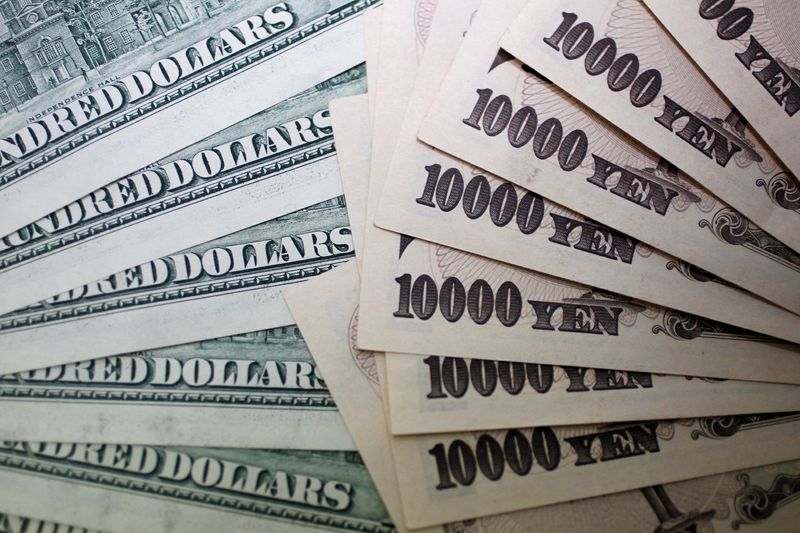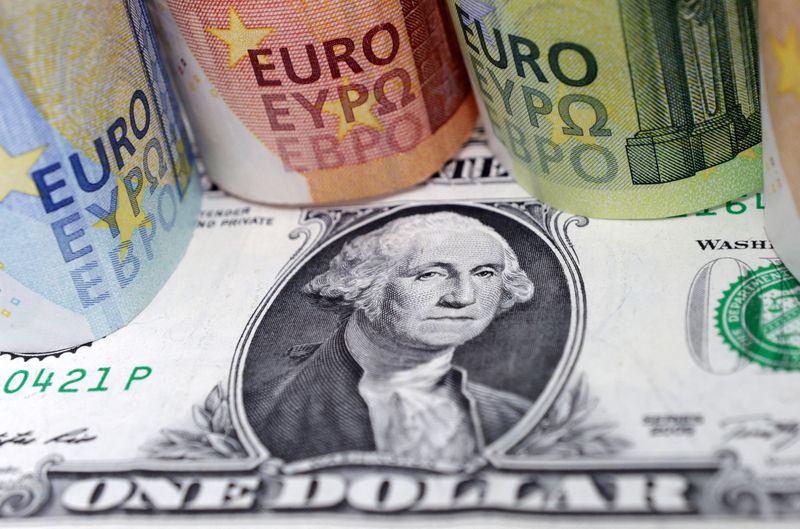Forex
Euro, yen climb as dollar rally takes a breather

By Chuck Mikolajczak
NEW YORK (Reuters) -The euro and Japanese yen strengthened on Thursday as the U.S. dollar paused after rallying to a nearly three-month high, with the greenback only briefly moving off earlier lows as data supported views for slower rate cuts by the Federal Reserve.
Weekly initial jobless claims fell to 227,000, below the 242,000 estimate of economists polled by Reuters, while continuing claims rose to a nearly three-year high. The Fed is likely to discount the climb earlier in claims this month due to distortions from Hurricane Helene.
A separate report from S&P Global said its flash U.S. Composite PMI Output Index, which tracks the manufacturing and services sectors, rose to 54.3 this month from a final reading of 54.0 in September. A reading above 50 signals expansion.
The greenback has climbed in 16 of the past 18 sessions, on pace for its fourth straight week of gains, as a run of positive economic data has quieted expectations about the size and speed of the Fed’s rate cuts, which has also lifted U.S. Treasury yields.
“We’re looking at some profit-taking here,” said Joseph Trevisani, senior analyst at FXStreet in New York.
“But underneath that, of course, has been the shift in rates and the shift in perception about what the Fed is going to do. And that hasn’t changed so for the moment, we’re kind of holding.”
The yield on benchmark U.S. 10-year notes fell 4.6 basis points to 4.196% after hitting 4.26% in the prior session, its highest in three months.
The , which measures the greenback against a basket of currencies, fell 0.37% to 104.05, its first decline after three straight sessions of gains, with the euro up 0.39% at $1.0823 after hitting a nearly four-month low of $1.076 on Wednesday.
A survey showed euro zone business activity stalled again last month, but the contraction in Germany, Europe’s largest economy, was less steep than the previous month.
Recent comments from Fed officials have indicated the central bank will take a gradual approach to cutting rates. Inflation pressures have been easing but still have yet to return to where they need to be, said Federal Reserve Bank of Cleveland President Beth Hammack on Thursday.
Markets are pricing in a 95.1% chance for a cut of 25 basis points at the Fed’s November meeting, with a 4.9% chance of the U.S. central bank holding rates steady, according to CME’s FedWatch Tool. The market was completely pricing in a cut of at least 25 bps a month ago, with a 58.2% chance of a 50 bps cut.
In contrast, expectations for faster and potentially bigger rate cuts from the European Central Bank (ECB) have increased to weigh on the euro, after a host of policymakers warned about the risk of undershooting the central bank’s 2% inflation target.
ECB policymaker Robert Holzmann said the central bank could cut rates by 25 basis points at its December meeting if circumstances including inflation allow it. Latvian central bank Governor Martins Kazaks said inflation could fall quicker than expected but the ECB should stick to its practice of cutting rates step by step given the exceptional uncertainty.
The dollar has also benefited from a rise in market expectations for a victory next month by Republican candidate and former U.S. President Donald Trump, which would likely bring about inflationary policies such as tariffs.
Sterling strengthened 0.39% to $1.2971. British finance minister Rachel Reeves said she would change the measure of public debt that the government targets in next week’s budget to allow more borrowing for investment.
Against the Japanese yen, the dollar weakened 0.6% to 151.83.

BOJ Governor Kazuo Ueda said the recent fall in the yen was partially driven by optimism over the U.S. economic outlook, and the central bank needs to scrutinize further whether that optimism is sustained.
Ahead of Sunday’s election, polls showed Japan’s coalition government Prime Minister Shigeru Ishiba’s Liberal Democratic Party may struggle to retain its parliamentary majority, which could complicate monetary policy plans by the BOJ.

 Forex3 years ago
Forex3 years agoForex Today: the dollar is gaining strength amid gloomy sentiment at the start of the Fed’s week

 Forex3 years ago
Forex3 years agoUnbiased review of Pocket Option broker

 Forex3 years ago
Forex3 years agoDollar to pound sterling exchange rate today: Pound plummeted to its lowest since 1985

 Forex3 years ago
Forex3 years agoHow is the Australian dollar doing today?

 Cryptocurrency3 years ago
Cryptocurrency3 years agoWhat happened in the crypto market – current events today

 World3 years ago
World3 years agoWhy are modern video games an art form?

 Commodities3 years ago
Commodities3 years agoCopper continues to fall in price on expectations of lower demand in China

 Economy3 years ago
Economy3 years agoCrude oil tankers double in price due to EU anti-Russian sanctions


























